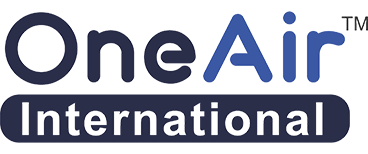
We frequently take breathing for granted until it becomes challenging. To guarantee that oxygen reaches every cell in the body, our respiratory system, which is composed of the lungs, airways, and surrounding muscles, works nonstop. Yet, from minor seasonal allergies to chronic diseases like asthma and chronic obstructive pulmonary disease (COPD), millions of individuals worldwide suffer from respiratory disorders that can lower their quality of life.
Common Respiratory Problems
1. Asthma
One of the most common long-term respiratory conditions is asthma. Wheezing, coughing, and shortness of breath are brought on by inflammation and airway constriction. Each person has different triggers, but some examples include stress, cold air, exercise, and allergies. Since there is no cure for asthma, it can be managed successfully with medication and lifestyle adjustments.
2. Chronic obstructive pulmonary disease
A progressive illness, COPD is frequently brought on by smoking, extended exposure to toxins, or genetics. It encompasses ailments that harm the lungs over time, such as emphysema and chronic Asthma. Without treatment, symptoms that start as moderate breathing difficulties can get worse and make everyday chores challenging.
3. Allergic Rhinitis
Millions of people worldwide suffer from allergic rhinitis, sometimes referred to as high fever. It causes sneezing, congestion of the nose, and trouble breathing, and is brought on by exposure to allergens such as dust mites, pollen, or pet dander. It may have a serious negative influence on sleep, productivity, and general health if left untreated.
4. Pulmonary Fibrosis
Regardless of the lung scarring caused by this dangerous illness, oxygen cannot easily enter the circulation. It results in fatigue, an ongoing cough, and heart problems. Early identification is crucial for symptom management, though therapies can help delay its course.
The Importance of Early Diagnosis
The fact that symptoms in respiratory health frequently appear gradually is one of the biggest obstacles. Unfortunately, when treatment choices are restricted, this delay may result in a delayed identification of chronic illnesses.
Chest imaging, allergy testing, and lung function tests can all be used to detect issues before they become more serious. People can obtain individualized treatment regimens and avoid more difficulties by seeing a healthcare provider as soon as they notice recurring respiratory problems.
Protecting and Improving Lung Health
- Quit Smoking: The main cause of respiratory illnesses, including COPD and lung cancer, is cigarette smoke. Even after years, quitting smoking can have a major positive impact on lung health.
- Avoid Pollutants: Both indoor and outdoor pollutants, such as domestic cleaning products and industrial smoke, can harm the lungs. Exposure can be decreased by using air purifiers, using protective masks in high-pollution regions, and keeping internal ventilation adequate.
- Remain Active: Regular exercise enhances lung function by strengthening the breathing muscles. Breathing capacity may be improved by even easy workouts like yoga or walking.
- Practice Breathing Exercises: Breathing exercises like pursed-lip breathing and diaphragmatic breathing will help strengthen the lungs and lessen breathing difficulties.
- Vaccinate yourself: Vaccinations are a vital preventive precaution, particularly for those who have long-term lung problems.
Innovation in Respiratory Care
People with chronic respiratory disorders now have hope thanks to considerable advancements in medical science in recent years. Patients now have access to more efficient and individualized therapy due to advancements in medication delivery systems for COPD and inhalation therapies and biologic treatments for asthma.
Patients may stay in touch with medical professionals and keep a closer eye on their ailments with the use of smart inhalers, telemedicine consultations, and smartphone apps for tracking symptoms. These developments enable people to take charge of their respiratory health in addition to improving treatment results.
Breathing Freely, Living Fully
A healthy respiratory system is essential to living a full life. Every element of everyday life is impacted when breathing becomes difficult, including relationships, employment, sleep, and physical exercise. We can lessen the burden of respiratory illnesses and get closer to a day when everyone can breathe well by emphasizing lung care, getting timely medical advice, and forming healthy habits.
Living life to the fullest is more important for lung health than just preventing disease. Every breath counts, and everyone must try to safeguard them.





